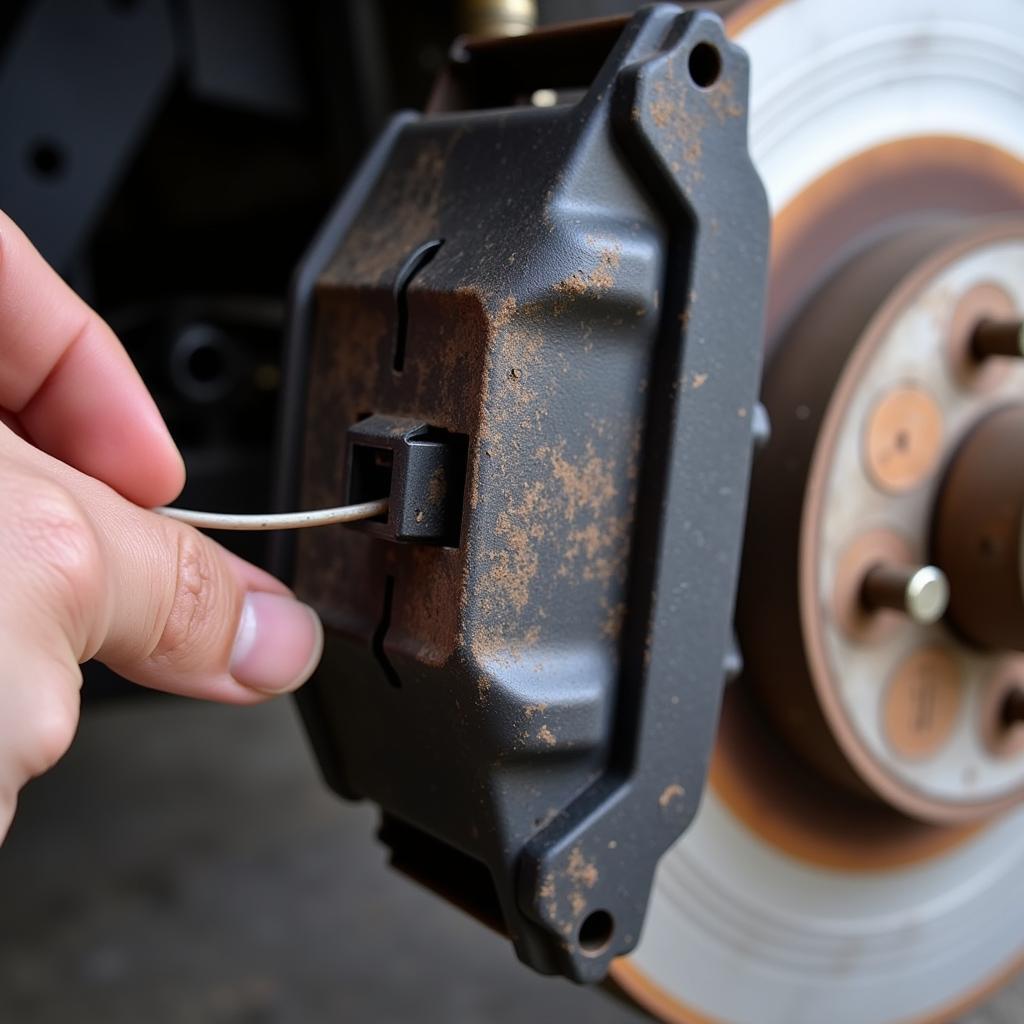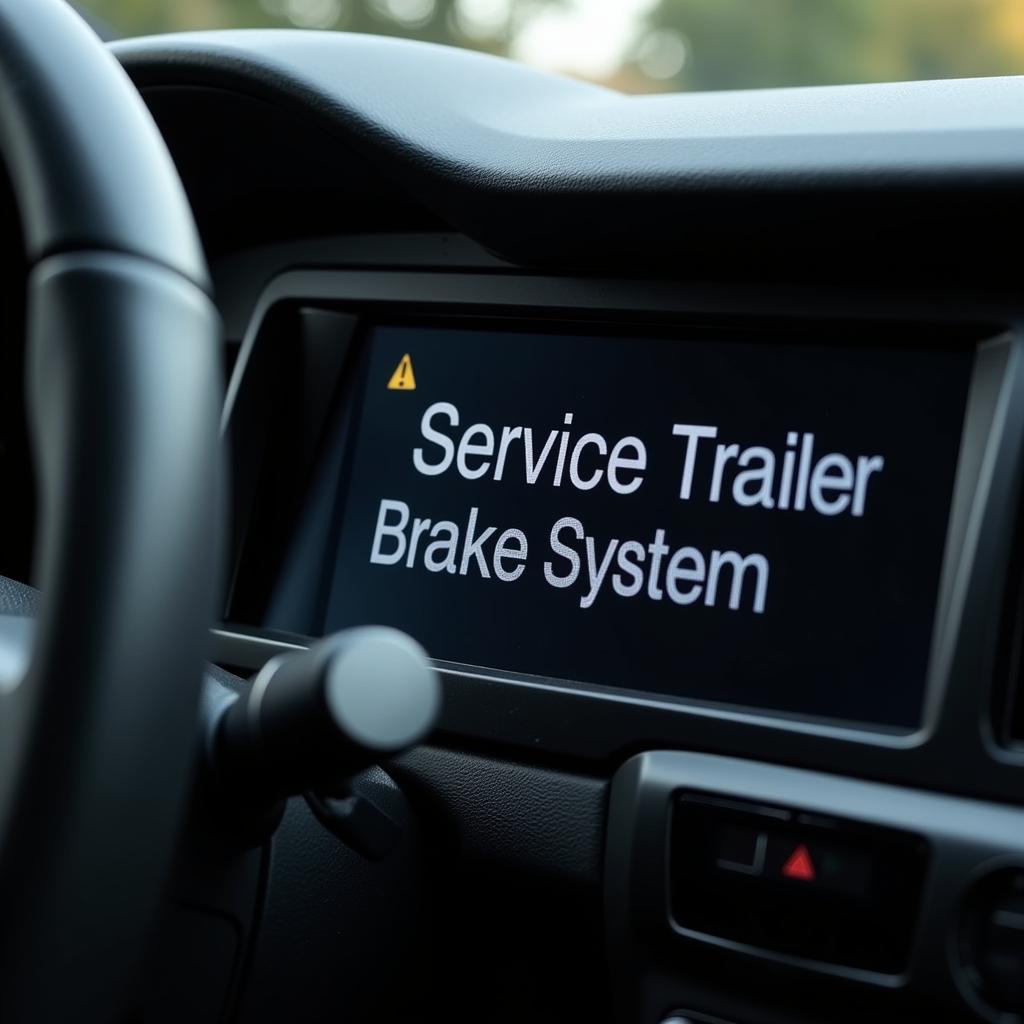So, you’ve just replaced the brake pads on your 2017 Honda Civic LX, expecting that annoying brake warning light to disappear. But, it’s still stubbornly glowing on your dashboard. Don’t worry, you’re not alone! This is a common issue, and we’re here to help you troubleshoot why your brake light is on even after a brake pad change.
Possible Reasons Your Brake Light is On
Several factors could be at play, and understanding them is crucial to resolving the issue:
1. Brake Pad Wear Sensor Triggered
What it is: Your Honda Civic LX is equipped with a brake pad wear sensor, a small wire embedded within the brake pad material. When the pads wear down to a certain point, the sensor makes contact with the rotor, triggering the brake warning light.
Why it’s happening: Even if you’ve installed new brake pads, the wear sensor might be worn out, damaged, or incorrectly installed.
How to fix it:
- Inspect the sensor: Check the sensor for any damage or if it’s properly seated in its slot.
- Replace if necessary: If the sensor is damaged, replace it with a new one.
 Brake pad wear sensor close-up
Brake pad wear sensor close-up
2. Low Brake Fluid Level
What it is: Brake fluid is the lifeblood of your braking system, transmitting force from the brake pedal to the calipers, which then engage the brake pads.
Why it’s happening: If the brake fluid level is low, it could trigger the brake warning light. New brake pads often require slightly more brake fluid to operate correctly.
How to fix it:
- Check the brake fluid reservoir: Locate the reservoir (usually a translucent plastic container) and check the fluid level. It should be between the “MIN” and “MAX” lines.
- Top up if necessary: If the level is low, carefully add the correct type of brake fluid for your Honda Civic LX. Refer to your owner’s manual for the recommended fluid type.
 Checking brake fluid level
Checking brake fluid level
3. Faulty Brake Light Switch
What it is: The brake light switch is a small switch activated when you press the brake pedal. It signals the brake lights to illuminate and can also trigger the brake warning light.
Why it’s happening: A faulty brake light switch may not send the correct signal, causing the brake light to stay on.
How to fix it:
- Locate the brake light switch: It’s usually located above the brake pedal, under the dashboard.
- Test the switch: With the ignition on, press and release the brake pedal. If the brake lights don’t illuminate consistently, the switch likely needs replacement.
- Replace if necessary: Replacing the brake light switch is a relatively simple task. However, if you’re uncomfortable working with electrical components, it’s best to consult a mechanic.
4. ABS Issue
What it is: The Anti-lock Braking System (ABS) prevents wheel lockup during hard braking, maintaining steering control.
Why it’s happening: While less common, a problem with the ABS system, such as a faulty wheel speed sensor, can sometimes trigger the brake warning light.
How to fix it: Diagnosing and repairing ABS issues typically requires specialized equipment. It’s best to take your Honda Civic LX to a qualified mechanic for diagnosis and repair.
Still Seeing the Warning Light?
If you’ve checked all these potential issues and your brake warning light persists, there might be a more complex electrical problem.
“In my experience, intermittent electrical glitches can be tricky to diagnose. A thorough scan with a professional-grade OBD-II scanner can pinpoint the exact issue, saving you time and potential headaches,” advises Jake Carter, Senior Automotive Technician at Carter’s Auto Repair.
Conclusion
Seeing your brake warning light illuminated after a brake pad change can be frustrating. However, by systematically checking the common culprits outlined above, you can often identify and address the issue yourself. Remember, a properly functioning brake system is crucial for your safety and that of others on the road. If you’re unsure about any step or the light persists, don’t hesitate to seek professional assistance from a qualified mechanic.


